Tom's Guide Verdict
The Nothing Ear (1)’s transparent design will grab your attention, but it’s the comfy fit, balanced sound, useful features and low price that will hold it.
Pros
- +
Interesting design
- +
Great sound
- +
ANC with Transparency mode
- +
Affordable
Cons
- -
Weak battery life
- -
Not the most secure fit
Why you can trust Tom's Guide
Price: $99
Colors: White/transparent; black/transparent
Battery life (rated): 4 hours ANC on), 27 hours (ANC on with charging case); 5.7 hours (ANC off), 38 hours (ANC off with charging case)
Connectivity: Bluetooth 5.2
Size: 1.1 x 0.8 x 0.9 inches (per bud); 2.3 x 2.3 x 0.9 inches (charging case)
Weight: 0.2 ounces (per bud), 2 ounces (charging case)
Update: You can also check out the full review of the Nothing Ear (stick) now that it is here.
The Nothing Ear (1) clearly wants to be a rarity among the increasingly crowded rabble of true wireless earbuds. Its most obvious attempt to stand out is its transparent casing, parts and circuit boards peering out from within, but it’s also something else we seldom get to see: a quality 1st-gen product from a brand new company.
Nothing was formed by OnePlus co-founder Carl Pei, and the Ear (1) is its first-ever product. And yet instead of near-prototypical shoddiness with the kind of “aspirational” pricing you’d expect from a tech startup, this pair of buds is both well-made and attractively affordable. It’s even got active noise cancellation (ANC), microphones that produce stellar call quality, and music performance is on par with some of the best wireless earbuds.
It’s not perfect — the loose fit won’t suit runners, and battery life underwhelms — but generally, this is one seriously strong debut. Keep reading our Nothing Ear (1) review to find out why.
Nothing Ear (1) review: Price and availability
- MSRP has increased to $149
- Black/transparent option available
At $99, the Nothing Ear (1) is firmly within budget earbud territory. It’s even cheaper than the standard Apple AirPods, let alone the AirPods Pro that it’s seemingly trying to compete with on features.
Update: The company's has announced a price rise for the Ear (1) and increased Its ANC earbuds by 50% to $149 (£149). In a statement, a Nothing spokesperson told Tom's Guide that the increase was in line with the global economic climate, increased operating costs, and further R&D costs incurred.
White/transparent and black/transparent color options are now available from the Nothing website at the new price. Alternatively, they can still be found online at Amazon for $99.
Nothing Ear (1) review: Design and comfort
- Unique transparent styling
- Comfortable, but not particularly secure
The see-through plastic on the Ear (1)’s stems is arguably its signature feature. In truth this is not as disruptive and utterly singular a pair of headphones as some of Nothing’s pre-release hype would suggest — if the plastic was white it could be mistaken for just another AirPods clone — but I do genuinely like how it shows off the circuitry underneath.
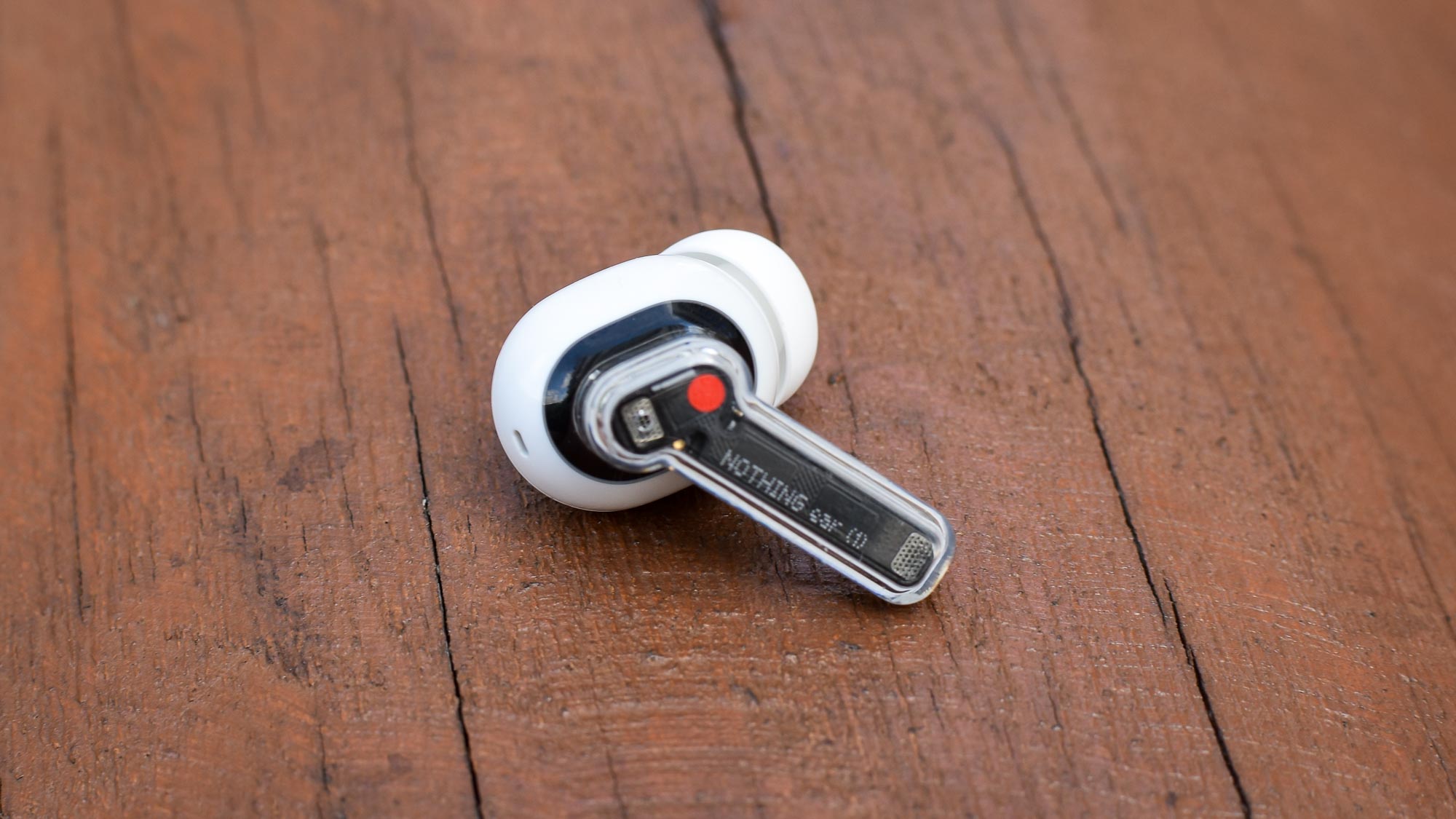
There’s an attention to detail here you just don’t get on most earbuds, from the tiny printed lettering on each stem to the clearly visible touch sensors.
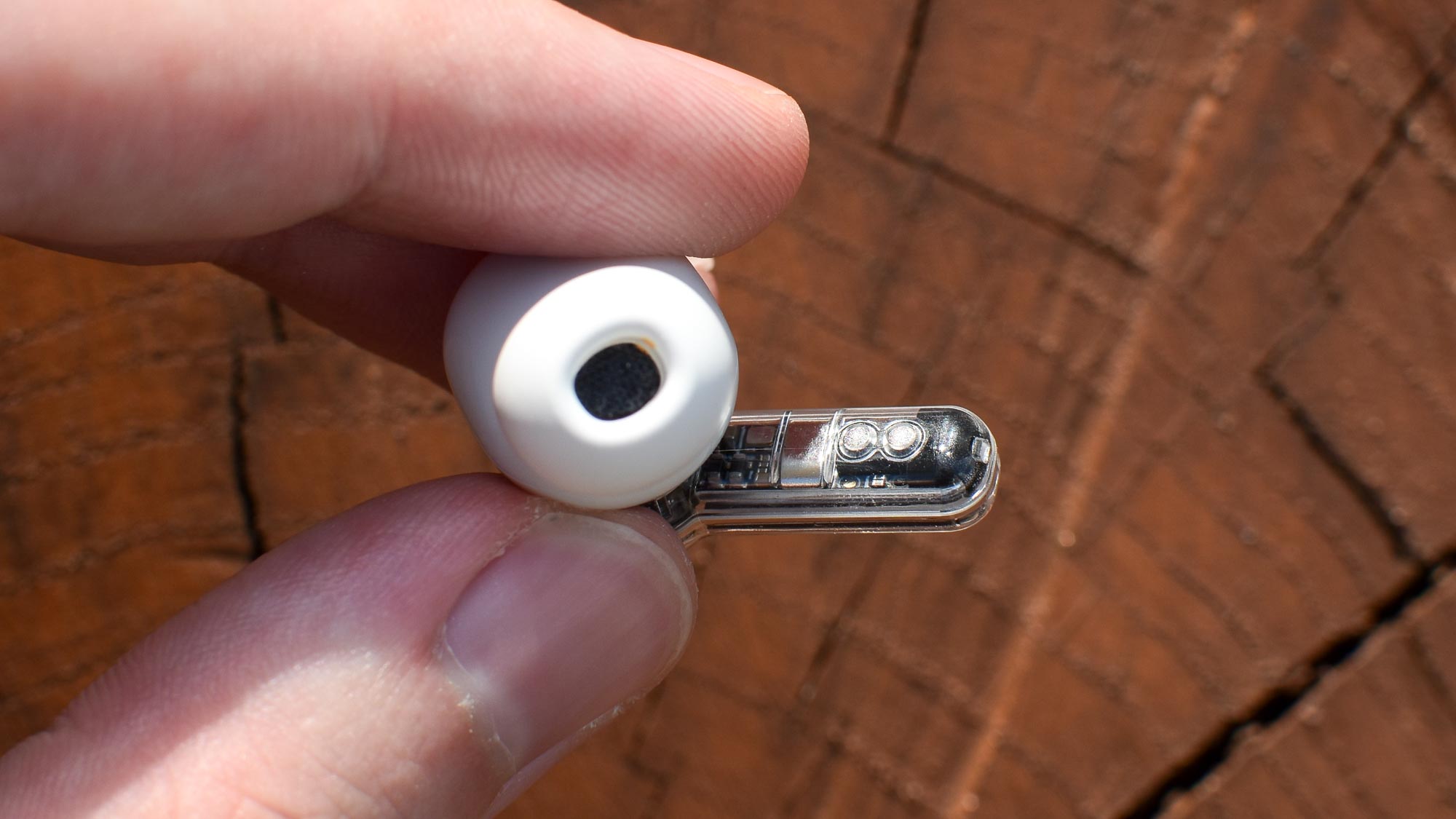
The earbuds also feel more solid than a lot of cheap wireless models, which might have something to do with their IPX4 rating — the same level of sweat resistance and splash-proofing that the premium AirPods Pro enjoys.
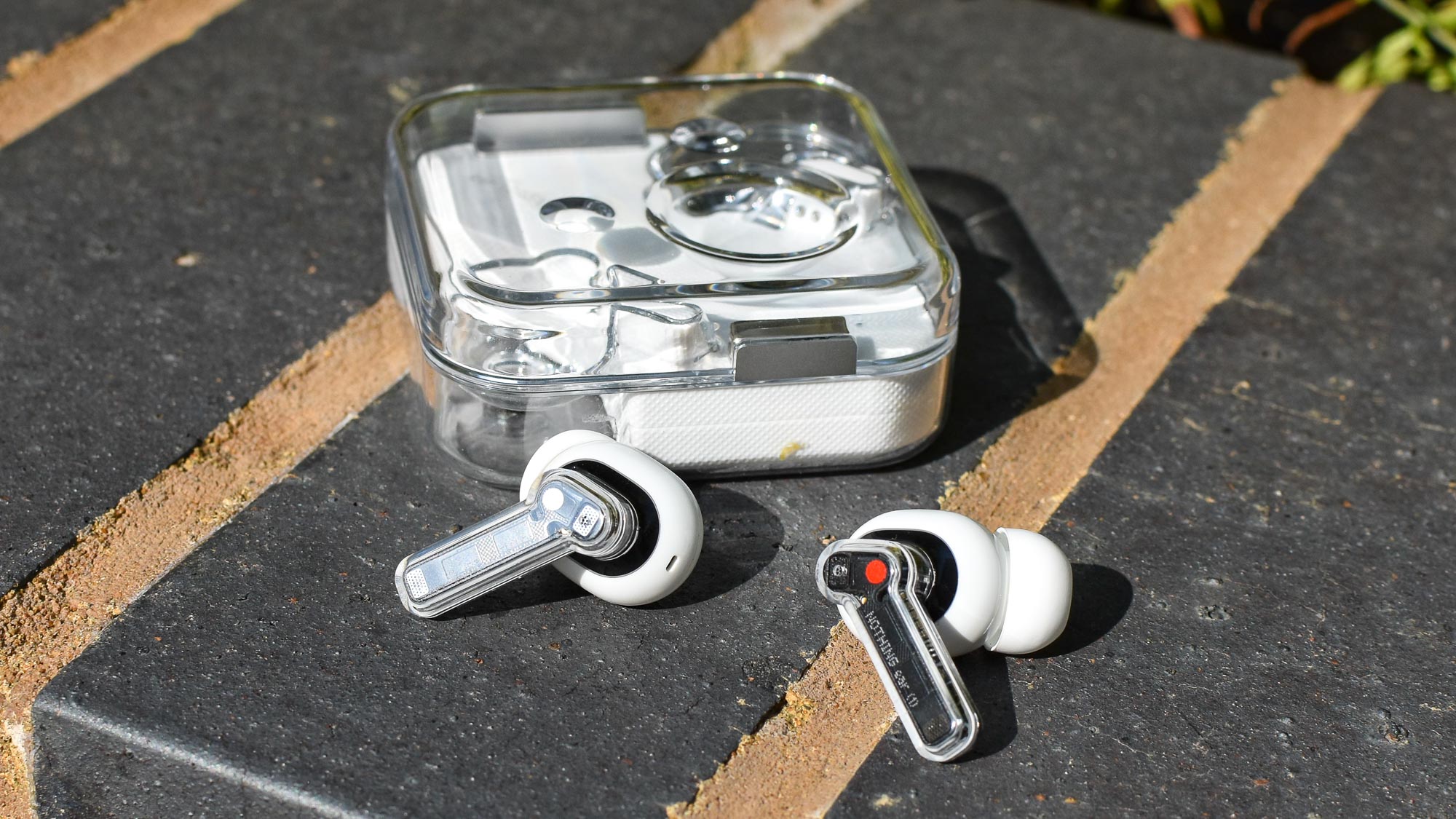
The Ear (1)’s replaceable eartips also share the slightly oval shape of the AirPods Pro tips. Whether intentional or not, this results in a similarly comfortable feel, and I easily went hours without needing to relieve any pressure.
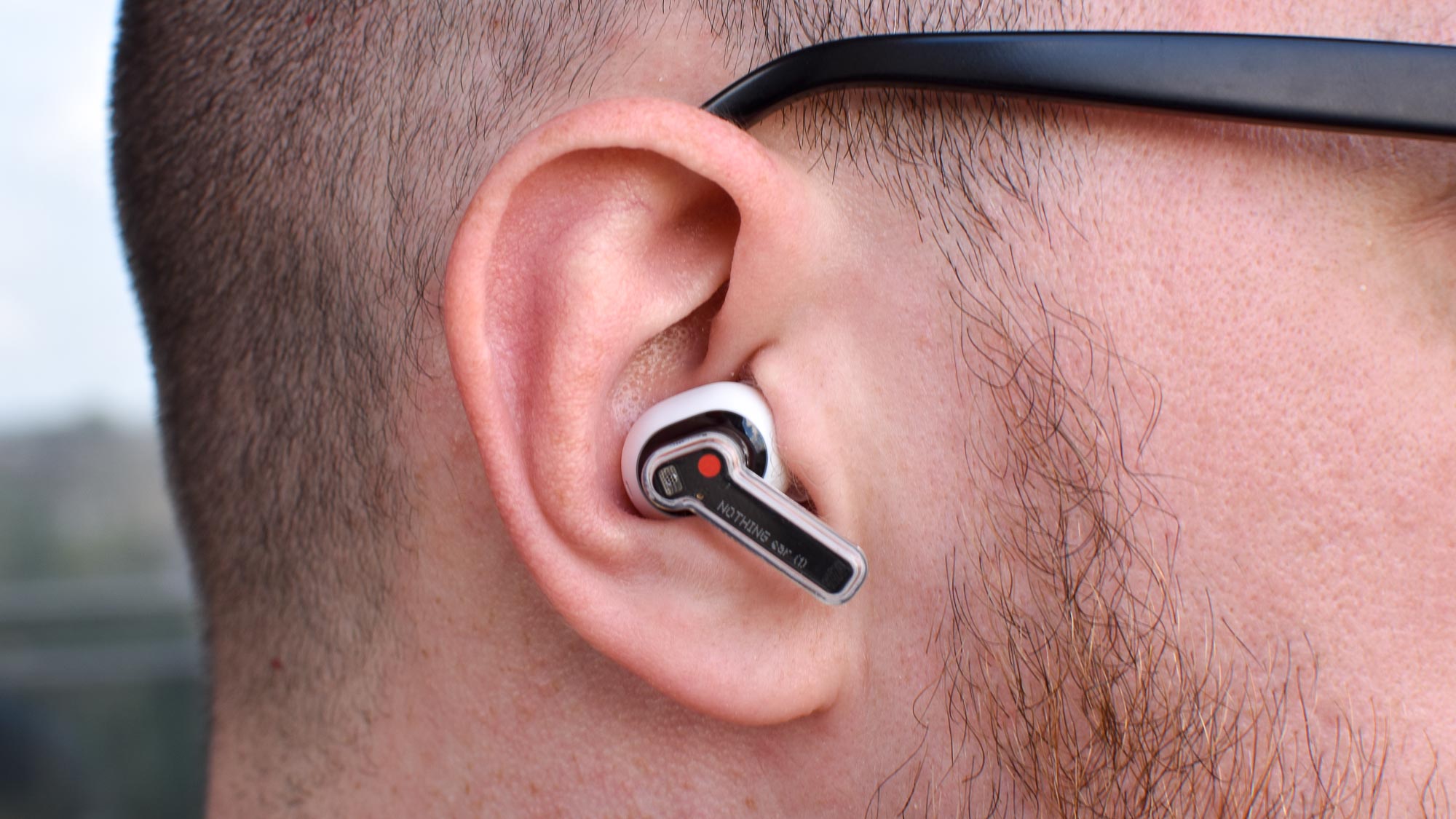
However, runners and gym-goers be warned: this is a comfy set of buds, but not a very secure one. I sometimes found them working loose on long walks, and while fleeing a sudden torrential downpour, I had to stop to pick up one bud that had fallen out entirely. Still, at least that incident proved the water resistance worked.
Nothing Ear (1) review: Controls and digital assistant
- Touch sensors are reliable
- No built-in digital assistant support, though
Those visible touch sensors do a very good job of registering tap and swipe gestures, which as the Anker Soundcore Life P3 has shown, isn’t always the case with cheaper true wireless buds. There’s no single tap input, which is unusual, but double and triple tap, tap and hold and slide up/down inputs allow for a decent range of control. That includes volume adjustment, a minor win over the AirPods Pro.

A less pleasant surprise is the inability to summon digital assistants like Google Assistant and Siri. You can still use your respective AI helper by activating it from your phone, and the Ear (1)’s microphones helped accurately parse my voice commands, but you can’t wake them up with a tap.
I rarely employ my digital assistant so this wasn’t much of a problem for me, but it’s worth bearing in mind if you’re a regular voice control user.
Nothing Ear (1) review: Sound quality
- Balanced but powerful sound
- Some EQ presets available, but aren’t necessary
Nothing went for a balanced sound signature on the Ear (1), which to my ears was a good call. There’s a healthy amount of low-end — the bassline on Muse’s “Uprising” sounded as rich as it was slathered in fuzz effects — and vocals cut through cleanly.

If anything, the Ear (1) reminds me of (what else?) the AirPods Pro, in how it manages to present a lively soundstage that’s under control but never too muted or flat. There’s plenty of detail on display as well, like the subtle sound of guitar fretting movements on Lorde’s “Stoned at the Nail Salon.”
If you really want, you can use the app — more on this in a moment — to switch between four different EQ presets. I recommend sticking with the default “Balanced” profile for the most part, though. “More treble” sounds more hollow than sparkling, “More bass” is a little too boomy and “Voice” just makes everything sound like it’s coming out of an old radio. Even podcasts, which consist of nothing but voices, sound worse.
Nothing Ear (1) review: Active noise cancellation
- Good for the money, with multiple modes
- Not as effective as more expensive rivals
As cool as it is to get ANC on a cheap pair of wireless buds, individual implementations pretty much never compare to the likes of the AirPods Pro or Bose QuietComfort Earbuds.
Sure enough, the Ear (1)’s sound-silencing tech won’t win any awards. Loud subway trains can overwhelm the effect, and even indoors you can’t completely block out TVs and keyboards without simultaneously playing music at a reasonably high volume.
Nonetheless, am I happy it’s here? Sure. The ANC might not be world-leading but it works well enough to quieten passing traffic, or allow me to work in peace with a window open.
There are two levels, Light and Maximum. Light can suffice for the distracting sounds of home life, but if you’re out and about, Maximum is noticeably more effective. There’s also a Transparency mode, which is useful too. It makes picking up speech easier without inadvertently boosting the volume of droning sounds like AC units.
Nothing Ear (1) review: App and features
- Mix of essential and potential useful utilities
- Find My Earbud allows short-range locating
The Ear (1) app is a worthwhile download. Its main appeal is making the touch controls customizable, at least to an extent: the tap and hold gesture can only cycle through ANC modes, though the triple tap gesture can be assigned to a variety of tasks.
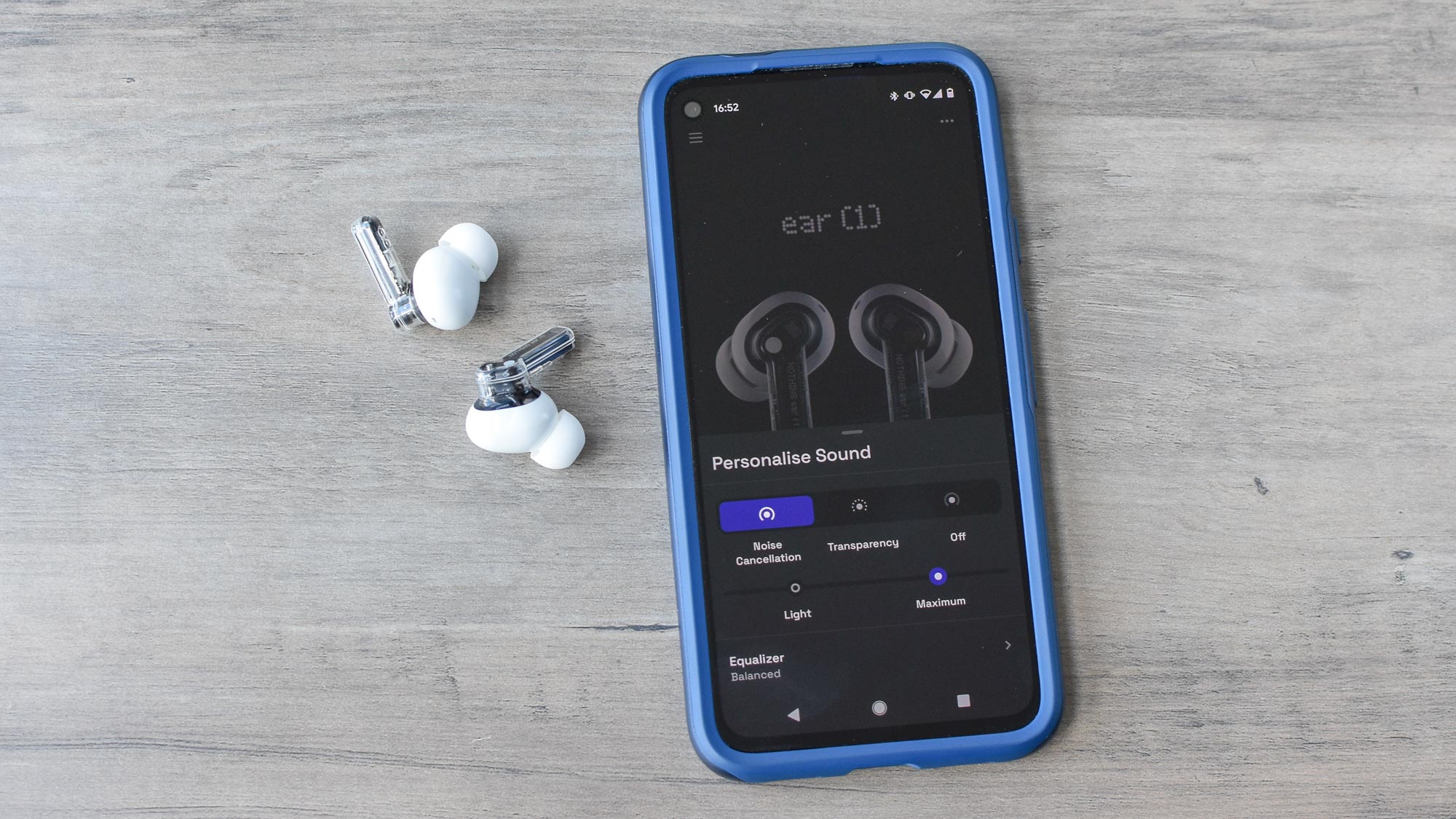
If you want to jump to a specific ANC mode instead of cycling through them one by one, the app’s got you covered there too. There’s even a Find My Earbud tool; this won’t help you locate a lost pair across town, but if you’re within the general area of the Ear (1) you can have both earbuds emit a piercing, continuous beep. Yet again, it’s another way that Nothing’s buds offer AirPods Pro capability at a much lower price.
That said, there’s nothing here to equal the Apple buds’s spatial audio mode, or instant switching between devices. There’s supposed to be fast pairing with Android devices, though this wasn’t enabled on my review unit at the time of testing.
You do get on-ear detection, though, and this works flawlessly. Music is paused almost instantly upon removing an earbud, and resumes quickly once it’s back in place.
Nothing Ear (1) review: Battery life
- Per-charge uptime is short
- However, can exceed official estimates
On paper, the Ear (1)’s battery life is nothing special: Nothing promises a mere 4 hours with ANC on, or an oddly specific 5.7 hours with it off. The charging case pushes things closer to the industry average, with grand totals of 24 hours with ANC or 34 hours without.
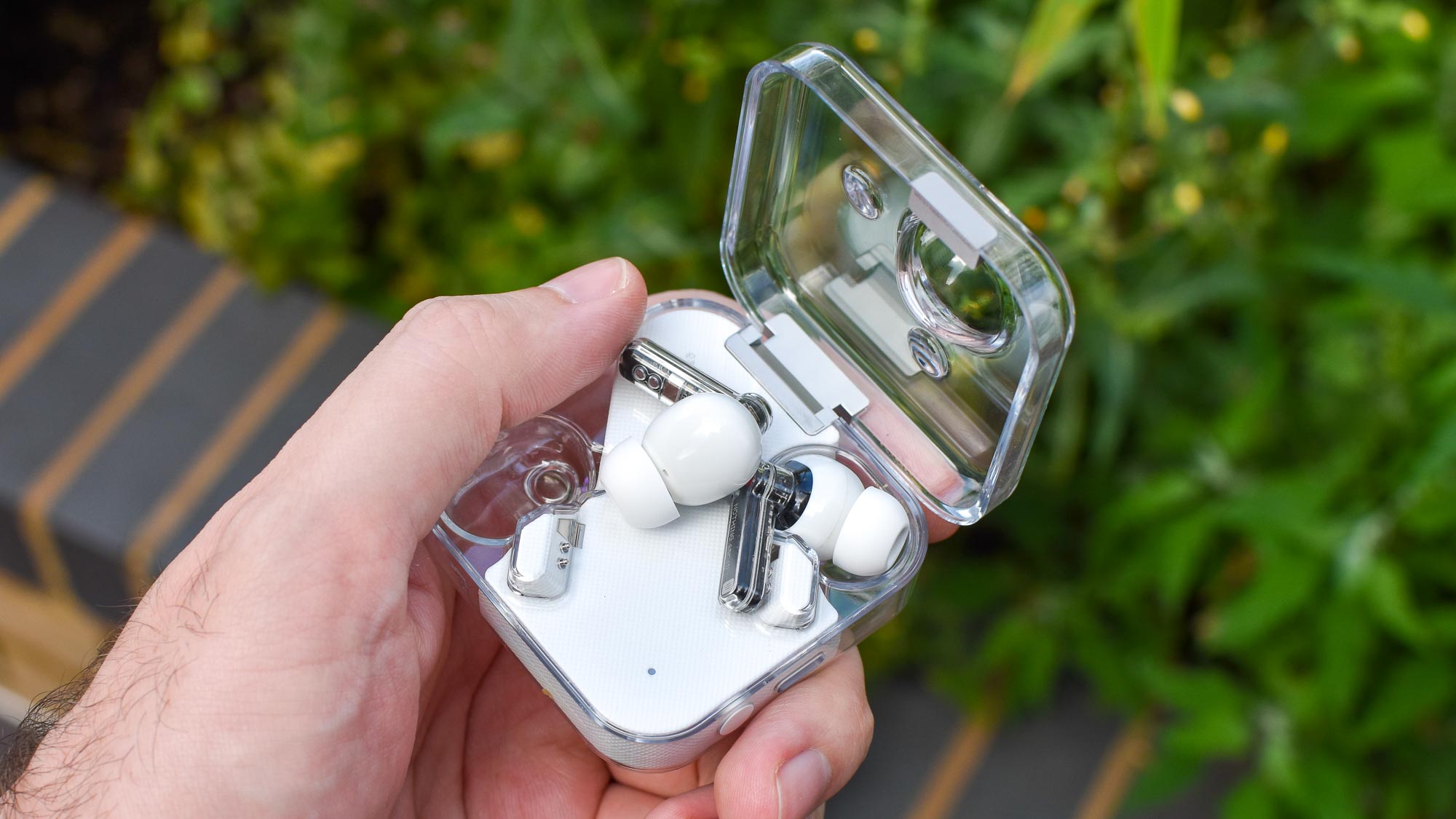
The good news is that the Ear (1) overperformed in our testing. With ANC on the Maximum setting and volume at 50%, it took 4 hours 51 minutes for the right earbud to run dry, followed by the left bud another 16 minutes later.
The bad news is that this still isn’t all that great. It beats the 4 hours 30 minutes of the AirPods Pro, which is worth commending, but even cheaper ANC earbuds can hit 6 hours between charges.
The Ear (1)’s charging case gets some goodwill back, though. It can refuel over USB-C or wireless charging, the latter being another higher-end feature not normally seen on affordable models.
Nothing Ear (1) review: Call quality and connectivity
- Excellent call performance
- Bluetooth 5.2 works well
One surprise highlight of the Ear (1) is how well it handles phone calls. To test, I phoned a friend twice, using the AirPods Pro immediately followed by the Ear (1). And, although Apple’s buds are among the best headphones with a mic for voice and video calls, the audible difference was negligible.
Outside, a tiny touch of background noise was more evident on the Nothing buds, and indoors I was told I sounded slightly more echoey. But again, the difference was extremely minor, and my voice came through clearly in both environments. On my end, I also thought my friend sounded louder and clearer on the Ear (1).
It helped that the Bluetooth 5.2 connection stayed strong throughout, though audiophiles may decry the lack of support for any aptX codecs.
Nothing Ear (1) review: Verdict
Pei has described the Ear (1) as “a breath of fresh air in a cluttered and indifferent market.” While it’s not really as groundbreaking as that might suggest, finding a pair of wireless earbuds that delivers this level of performance for under $100 is a very rare thing indeed.
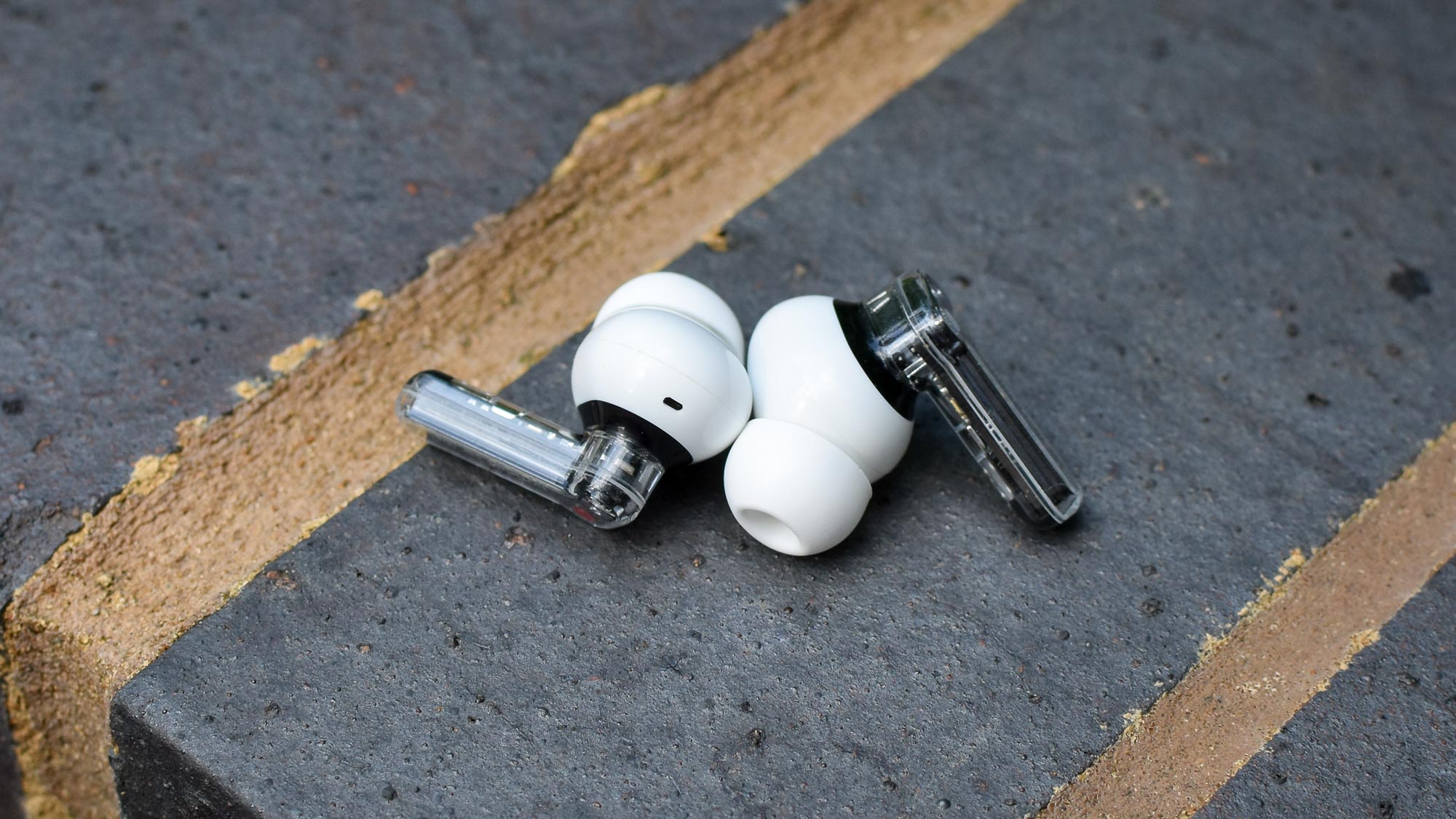
The Ear (1) sounds better than the average entry-level buds, while having an awful lot more features, and is drastically more affordable than its noise-cancelling peers. The short battery life and loose fit mean we’d like a refined follow-up even more, but right now the Nothing Ear (1) is still one of the best deals in headphones.
Next: Want to find out how these ANC earbuds compare to Apple's AirPods Pro? Check out the Nothing Ear (1) vs. AirPods Pro face-off to see which come out on top.
James is currently Hardware Editor at Rock Paper Shotgun, but before that was Audio Editor at Tom’s Guide, where he covered headphones, speakers, soundbars and anything else that intentionally makes noise. A PC enthusiast, he also wrote computing and gaming news for TG, usually relating to how hard it is to find graphics card stock.


